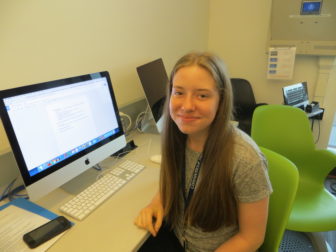On July 6, NASA astronaut Kate Rubins became the 60th woman to fly in space.

Claire Faulkner
Rubins has been on the International Space Station (ISS) now for several months, where she is a flight commander.
Before becoming an astronaut, Rubins earned a degree in cancer biology and helped the U.S. Army create therapies for the Ebola and Lassa viruses.
In 2009, Rubins was chosen from a group of 3,500 applicants to become an astronaut candidate. After seven years of training, she is finally in space. During her four-month stay on the ISS, she will use her expertise in biology to conduct research and numerous tests on how human bodies react to being in microgravity for extended periods of time.
Soon after Rubins returns to Earth, another woman, Peggy Whitson, the first female commander of the ISS, will return to the space station for the second time.
The influx of women into the space program is evident in the most recent class of astronaut candidates. For the first time, in 2013, the class was comprised of 50 percent women. The growing popularity of Science, Technology, Engineering and Math (STEM) programs, along with the decrease of gender barriers in the workforce, are among the factors that have led to the increased involvement of women, experts say.
“The more girls who go into STEM fields and become really good at them, the more women who will be well-qualified candidates for the job when they’re grown up,” said Brandi Dean, a NASA spokeswoman. “We have a woman living in space right now, another one scheduled to launch in November, and several more training for their turn right now. We’ll keep seeing them on the space station, and when our new Orion spacecraft is ready to launch people, we’ll see them going beyond low-Earth orbit and on to Mars.”
In history, there have been many jobs that people did not see as fit for women, and for a long time, space travel was one of them. NASA sent the first American man into space in 1961. The first female astronaut was not hired until 1978, seventeen years later. Only 14 percent of NASA astronauts have been women, and the world percentage is even lower at 11 percent. However, ever since the first women were hired, these percentages have been steadily rising.
“A qualified woman has every bit as good a chance of being chosen for the job as a man with the same qualifications,” Dean said. “We’ve made an effort to make sure all the smart women out there know that becoming an astronaut is an option for them, and that they should consider applying.”
Since 1978, not only have more women become astronauts, they have been accomplished. In 1983, Sally Ride became the first American woman in space. In 1984, Kathryn D. Sullivan was the first American woman to walk in space. In 1999, Eileen Collins was the first female commander of a space shuttle. In 2001, Susan J. Helms performed the longest space walk.
Now, in 2016, Rubins becomes the first person to sequence DNA in microgravity on the ISS.
When asked what the future holds for women in space, Dean said, “The exact same thing it holds for men!”
Claire Faulkner is a student at the Journalism & Media Academy in Hartford.